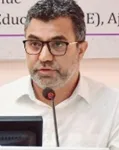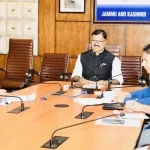India took a historic step on Thursday with the inauguration of its first end-to-end OSAT (Outsourced Semiconductor Assembly and Test) Pilot Line Facility in Sanand, Gujarat. The event, led by Union Electronics and IT Minister Ashwini Vaishnaw and Gujarat Chief Minister Bhupendra Patel, marks not just the unveiling of a facility, but the symbolic launch of India’s serious bid to become a player in the global semiconductor value chain.
For decades, India has been known as the back office of the tech world, a powerhouse of software talent, but largely absent in the high-stakes game of semiconductor manufacturing. That era may now be changing under the leadership of PM Modi.
The OSAT pilot facility, developed by CG Semi with an investment of over ₹7,600 crore, will serve as a proving ground for India’s chip packaging and testing capabilities, critical links in the semiconductor supply chain. With its G1 plant now operational and commercial production expected by 2026, the Sanand unit will handle everything from chip assembly to advanced packaging and post-test services.
Minister Vaishnaw’s remarks at the inauguration reflected both ambition and realism. While he framed the pilot line as a “decisive step” in fulfilling India’s semiconductor aspirations, he also emphasised the importance of customer qualification, a technical but vital milestone. Without meeting stringent global standards, production cannot move to scale.
India’s semiconductor mission, approved by the Union Cabinet in 2021 with an outlay of ₹76,000 crore, has now cleared ten projects, showing that the pipeline is building.
India’s most compelling advantage lies not just in its infrastructure, but in its people. With a projected global shortage of one million semiconductor professionals by 2032, India has an opportunity to become the world’s talent factory for this critical sector.
The government’s tie-up with 270 universities, equipping them with advanced semiconductor design tools, has already borne fruit , 20 chips designed by 17 Indian institutions have been successfully fabricated at SCL Mohali. As Vaishnaw rightly pointed out, very few countries offer their students such access. This isn’t just a policy intervention; it’s a strategic play. He added that this initiative will empower India’s youth, strengthen the technical ecosystem, and position the nation as a global hub of semiconductor talent. He also acknowledged the strong support of the Government of Gujarat and Chief Minister Bhupendra Patel in developing semiconductor ecosystem in Gujarat.
Gujarat, and Sanand in particular, has rapidly positioned itself as India’s emerging chip hub. With strong political backing, speedy land approvals, and plug-and-play infrastructure, the state has given India’s semiconductor ambitions a physical address.
The CG Semi plant isn’t a one-off. It is part of a long-term commitment to develop two state-of-the-art facilities, G1 and G2, in Sanand, with G1 alone boasting a peak daily capacity of half a million units. Its advanced Manufacturing Execution System (MES), in-house reliability labs, and planned ISO/IATF certifications underscore a level of seriousness that is both commendable and necessary.
This is not just about import substitution or Atmanirbhar Bharat. With global manufacturers looking to diversify beyond China, India has a rare window to integrate itself into the global semiconductor supply chain.






